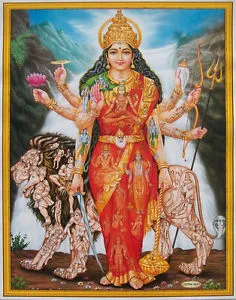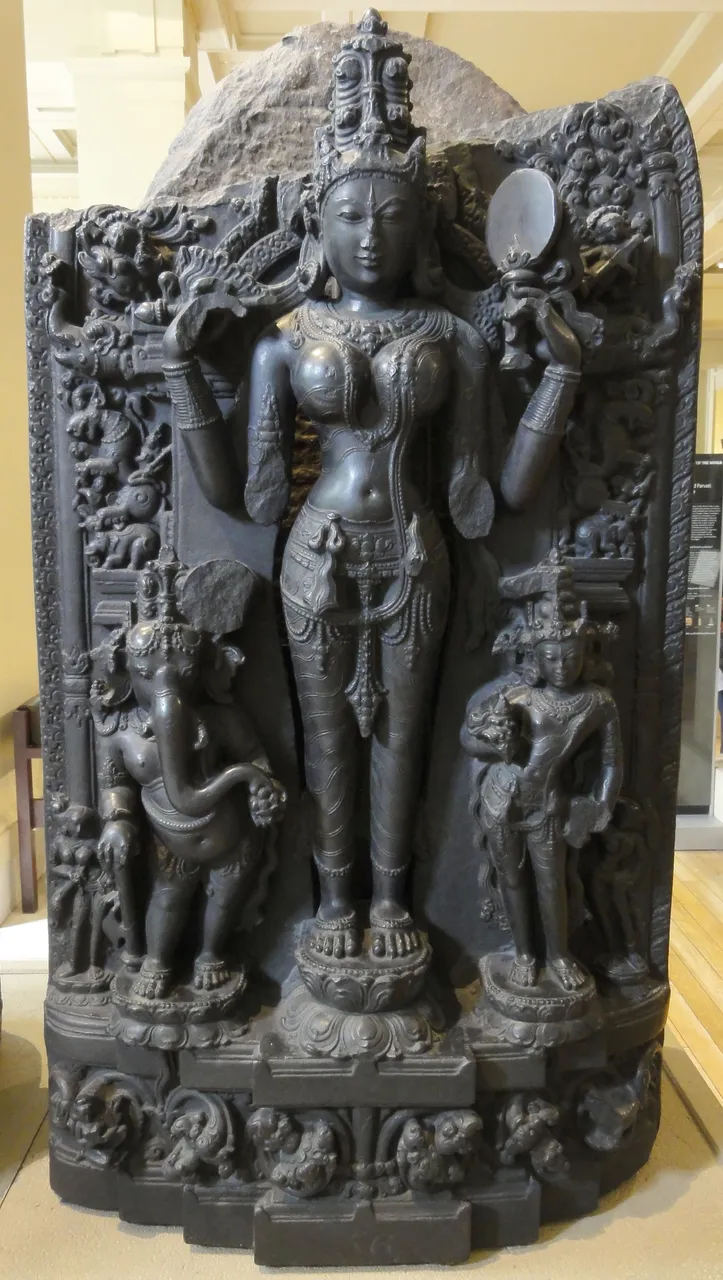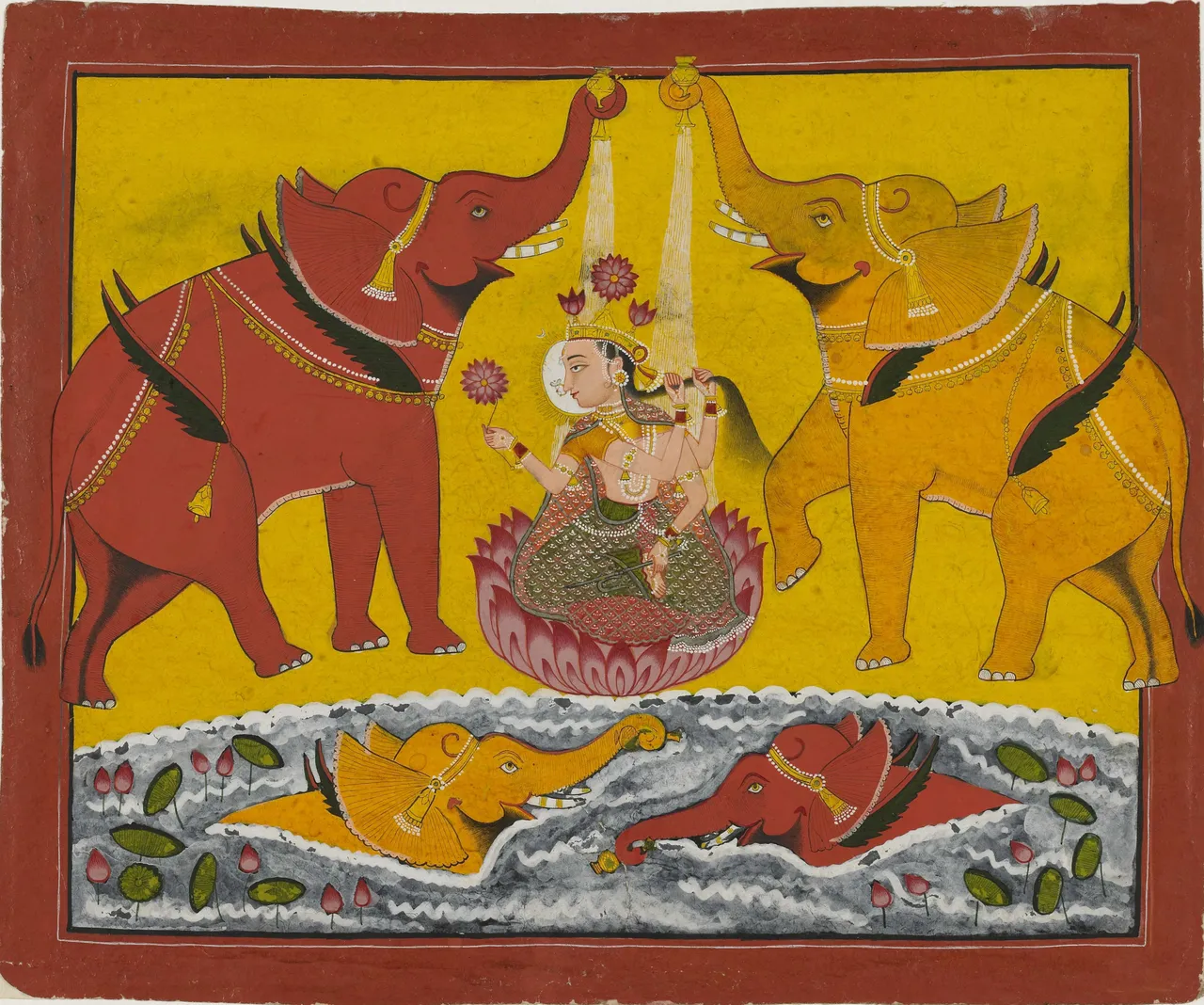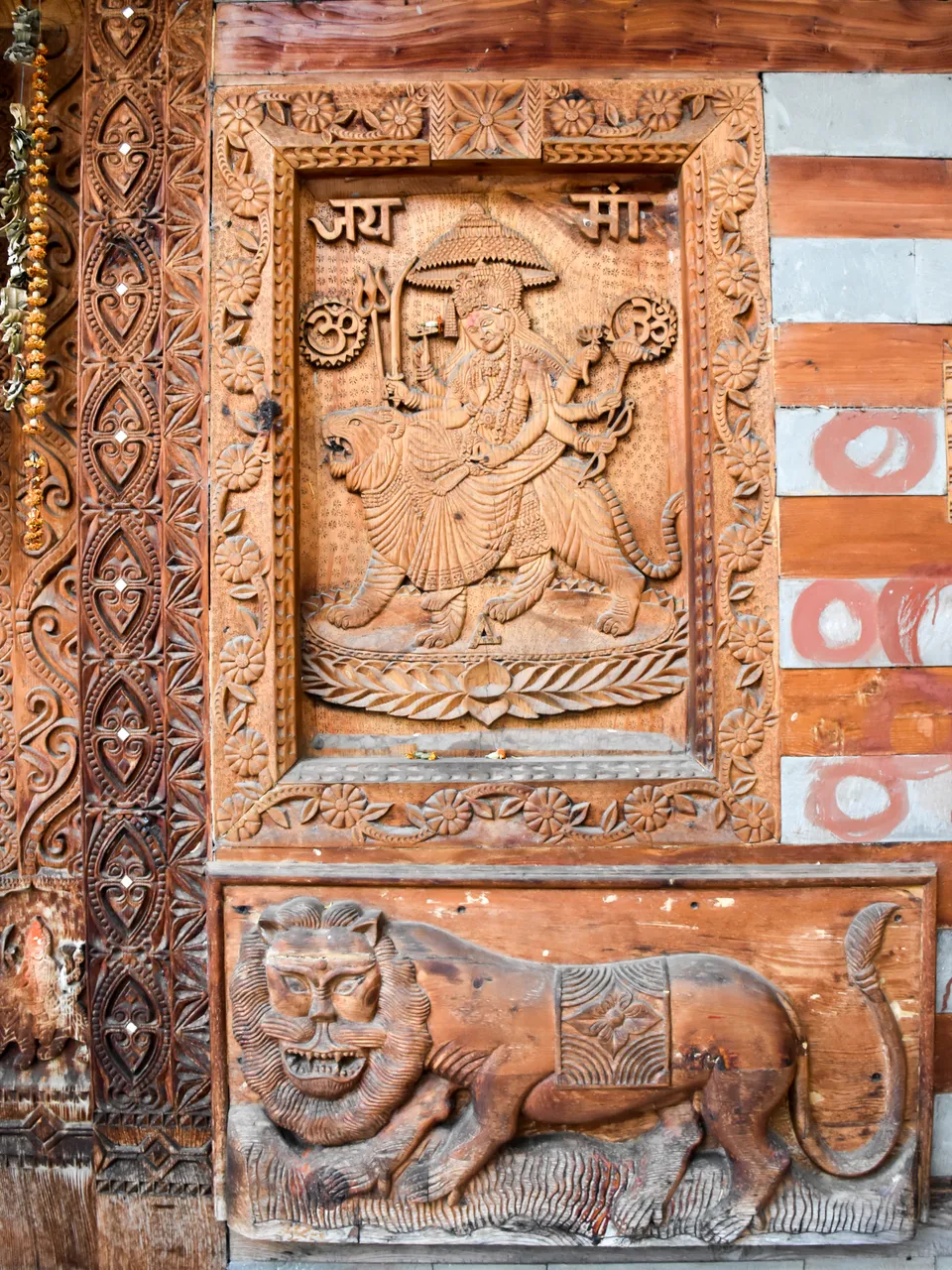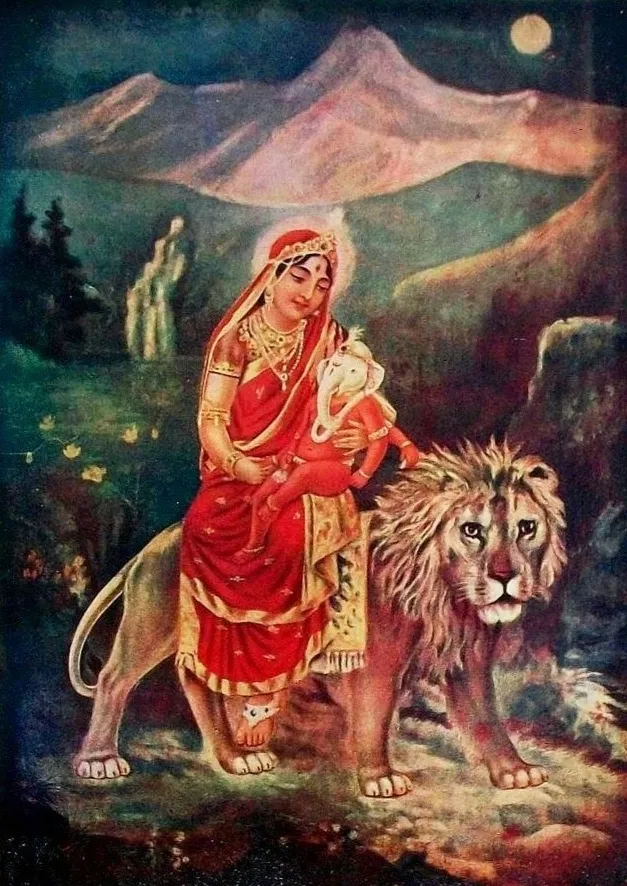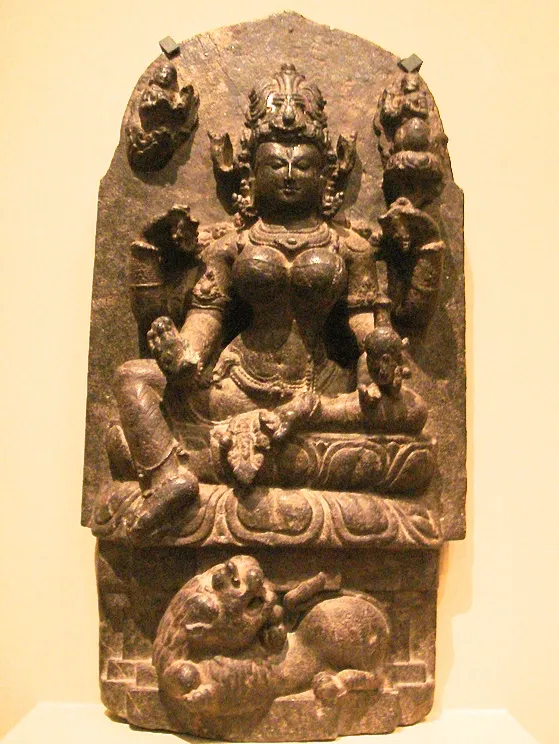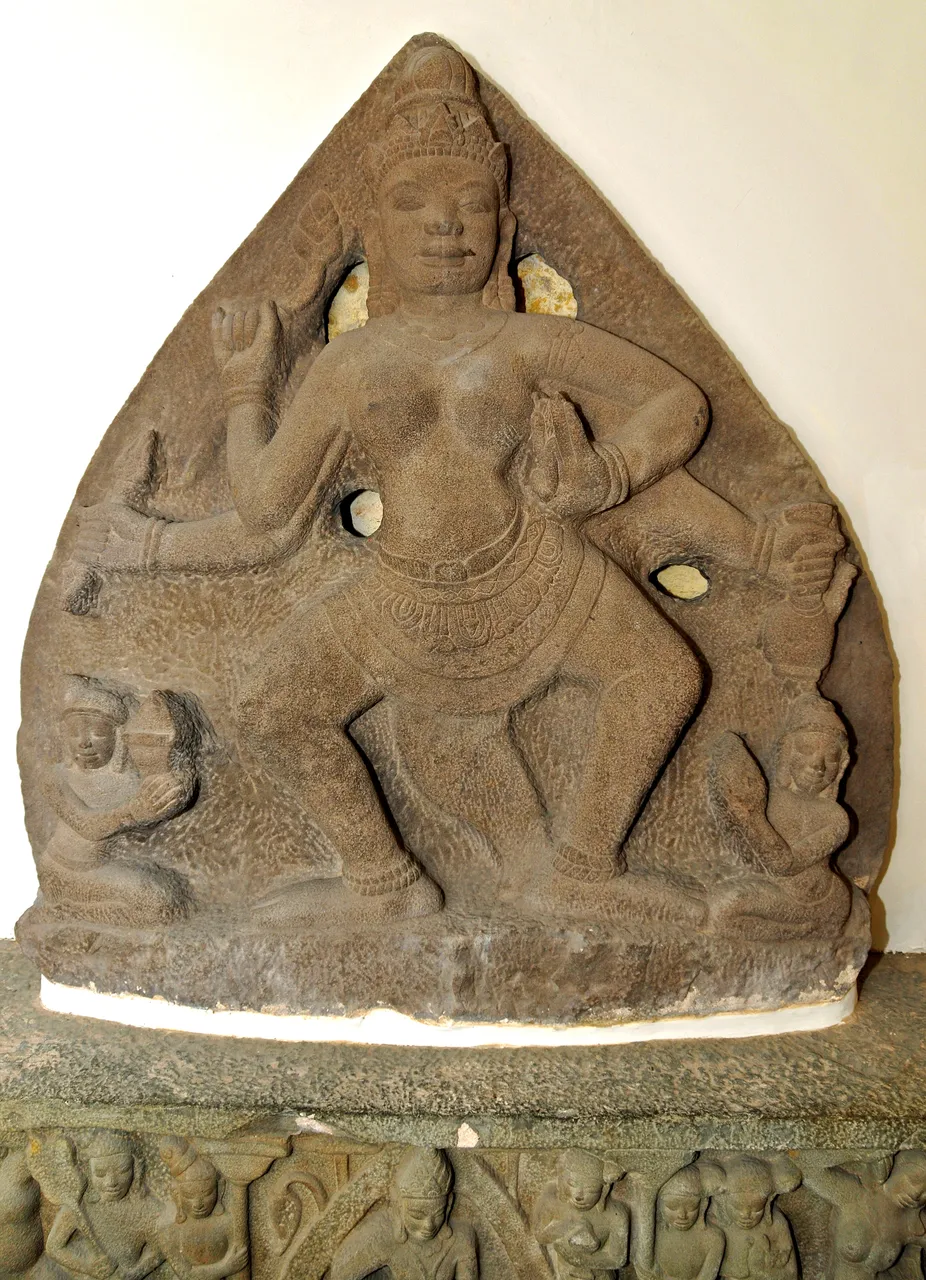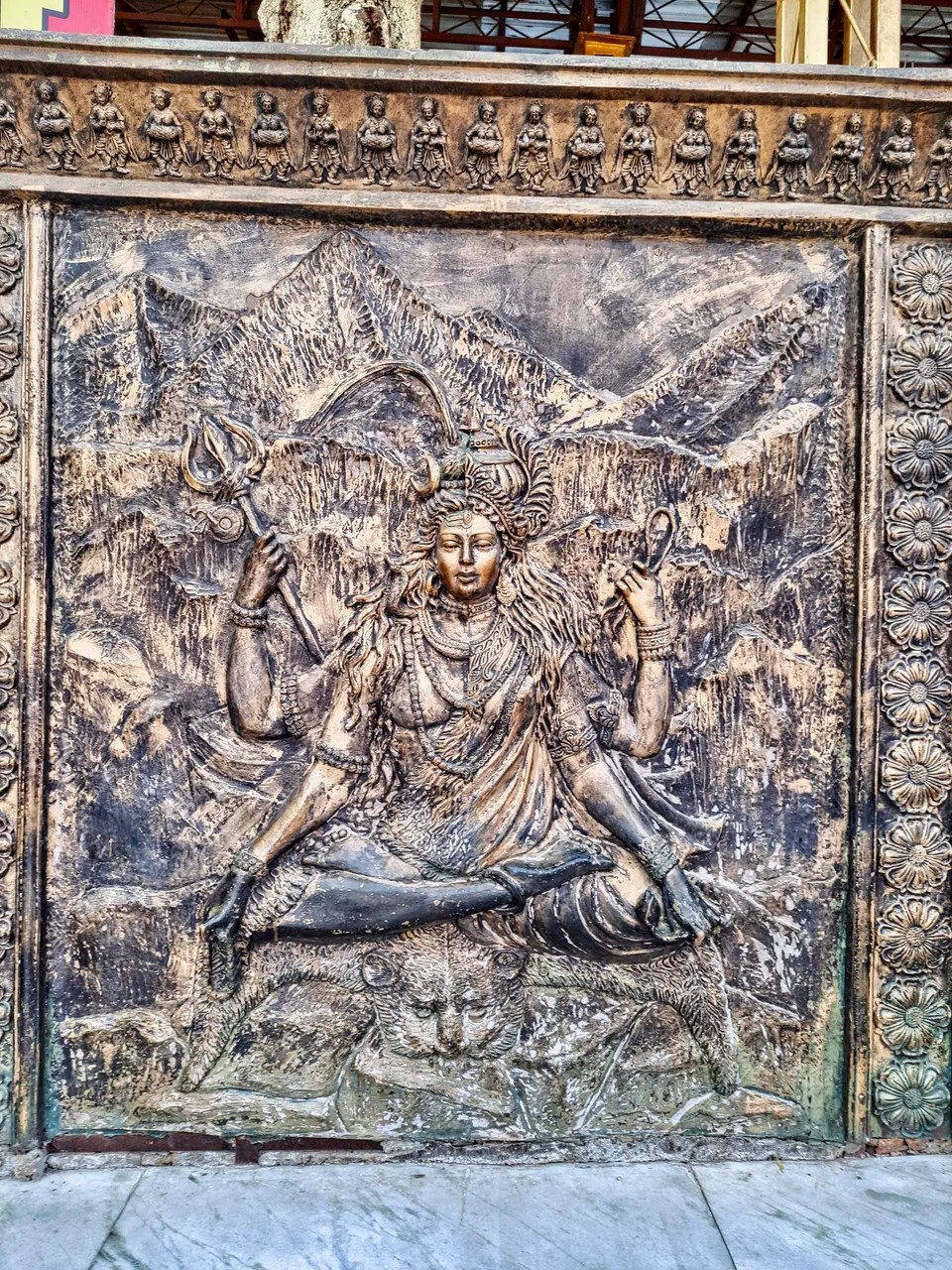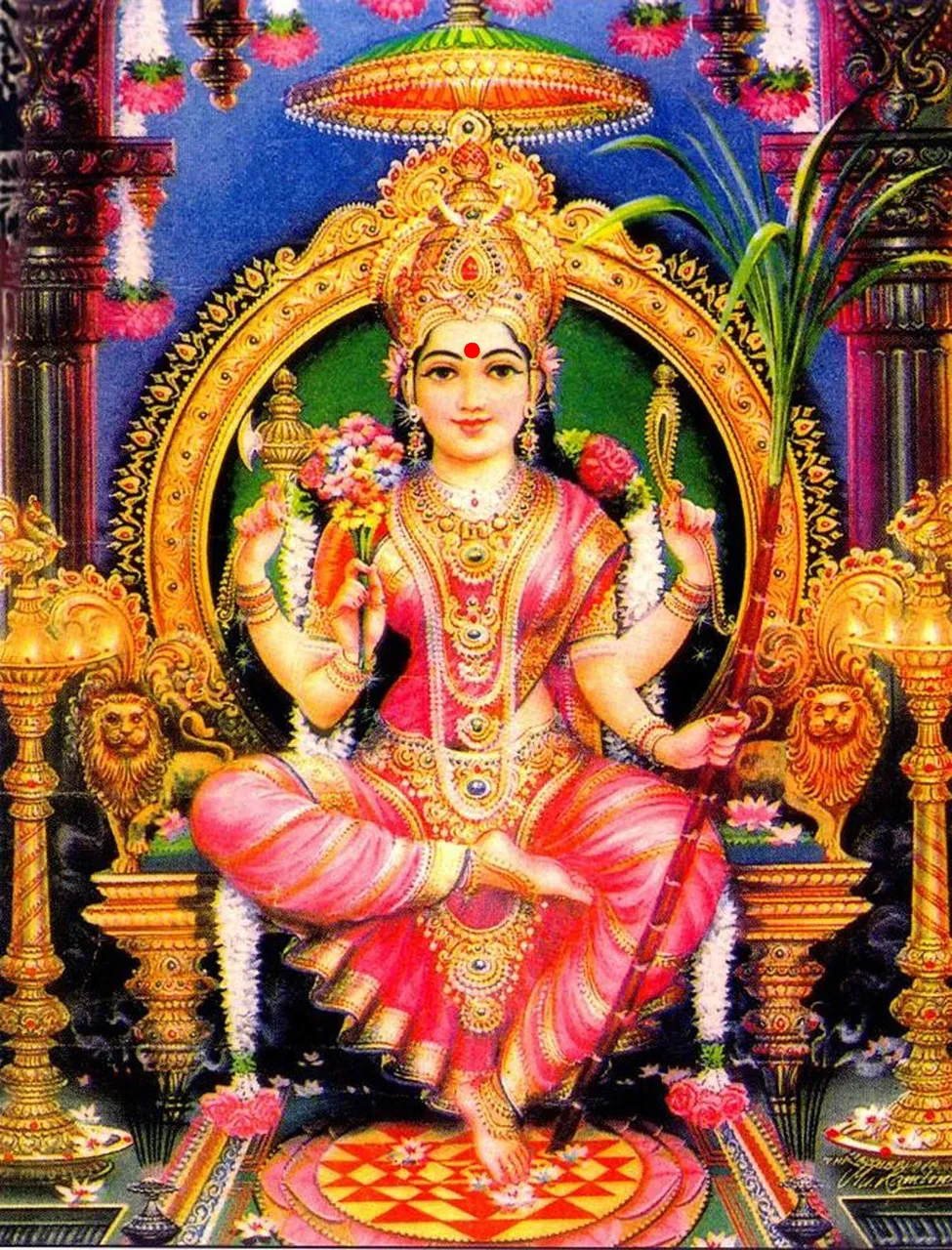
- Mulaprakrti
- Mahadevi
- Durga
- Mahamaya
- Bhuvaneshvari
- Parvati
- Tripura Sundari
- Shri Lalita
- Shri Mata (the great mother, note Rome's Magna Mater)
- Shri Maharajni (the great queen)
- Shrimat Simhasaneshwari (the queen sitting on the lion-thron)
- Udayatbhanu Sahasrabha (the one who is as bright as the rays of thousand rising suns, note the Nahuatl Tlecuauhtlacupeuh)
- etc.
As mentioned in a recent post the symbolic representation of The Mother of the Gods is usually something like:
...surrounded by a light, brighter than the sun, beams or rays clear as glass (Star of Ishtar?), a crown of towers or barbs above which hover stars, a robe of white or pink, with a blue sash, some kind of creatures or beings which are not quite alive more like machines or devices (pictured as lions or the faces of cherubim), in her hands she either holds a tambourine or prayer beads (Rosary), or has hands in prayer. In most cases she is seen descending from the sky or is hovering above in the air or off the ground.
Searching for such symbols in other cultures one must eventually encounter Mahadevi, a goddess of a thousand names, quite literally. Different aspects of avatars are present, for instance Durga.
To the above list must be added the all important symbol of a drop of water (or a drop of seawater to emphasize the name of Miryam) and elephants, both pointing to the importance of the H₂O molecule to DNA life.
It is much easier to see the similarities by looking at paintings and illustrations or other artwork.
